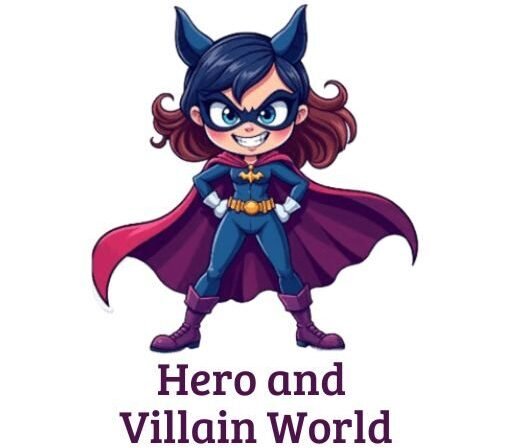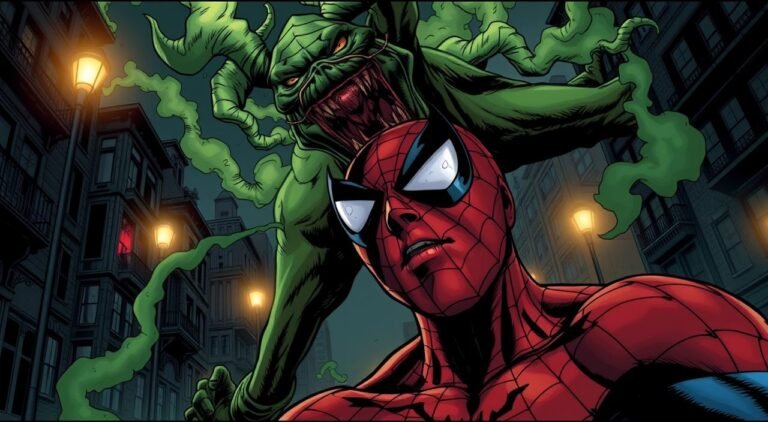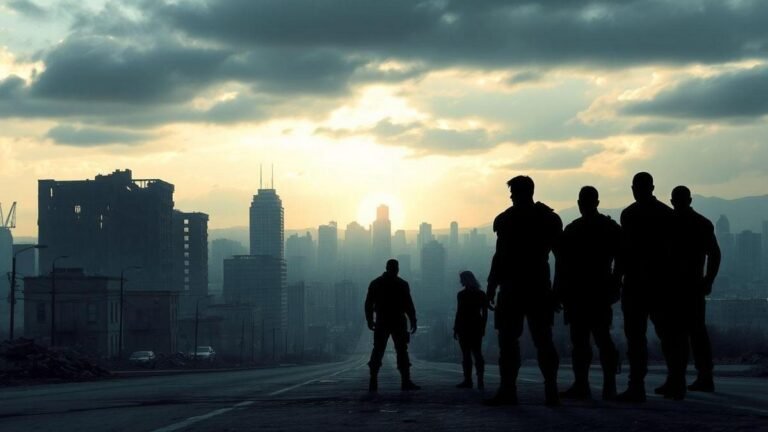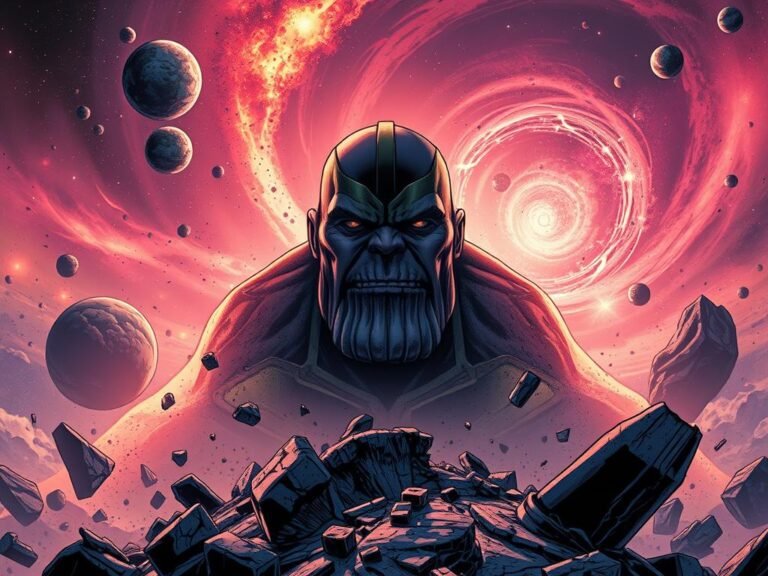Discover the Original X-Men: God Loves, Man Kills Graphic Novel (1982)
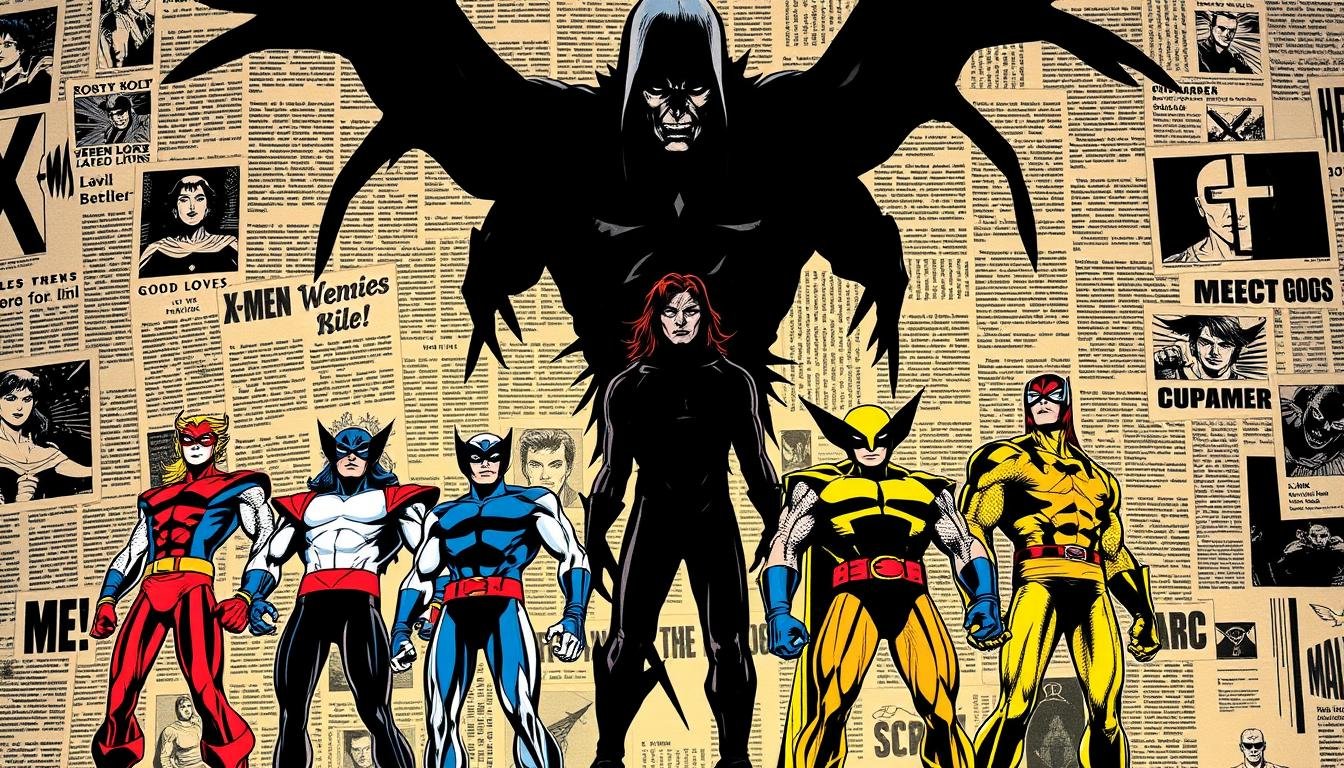
When I first read this graphic novel, I was struck by its bold storytelling and mature themes. Written by Chris Claremont and illustrated by Brent Anderson, it’s a story that redefined what comics could achieve.
Published in the early ’80s, it tackled issues like prejudice and power in ways that still feel relevant today.
At its core, the narrative explores the clash between mutantkind and humanity. Characters like William Stryker and Charles Xavier embody opposing ideologies, making the conflict deeply personal and thought-provoking. This isn’t just a comic; it’s a powerful commentary on society.
What makes this graphic novel stand out is its ability to balance action with emotional depth. Claremont’s writing and Anderson’s art create a world where every panel feels alive.
If you’re new to comics or a longtime fan, this story is a must-read. Let’s dive deeper into its legacy and why it continues to inspire.
Introduction to the Comic Legacy
Growing up, comics were my escape, but one story left a lasting mark. It wasn’t just about heroes and villains; it was about the struggles of humanity and the fight for acceptance.
That story was a graphic novel that redefined what comics could achieve.
My Personal Connection to the Narrative
As a child, I was drawn to stories that challenged my perspective. This book did just that. It wasn’t just a tale of mutants; it was a reflection of real-world issues.
The characters felt like real people, and their struggles resonated deeply with me.
I remember reading it for the first time and feeling a mix of emotions. The narrative of discrimination and moral challenges struck a chord.
It made me think about the world in a new way, shaping my view as both a fan and a scholar of comics.
Overview of the Historical Context
The early 1980s were a transformative time for comics. Themes of prejudice and power were emerging, reflecting the cultural debates of the era. This story was part of that shift, tackling issues that were both timely and timeless.
Chris Claremont, the writer, brought a unique vision to the group of mutants. His storytelling was bold and unflinching, addressing themes that many comics avoided.
It was a turning point in the industry, proving that comics could be more than just entertainment.
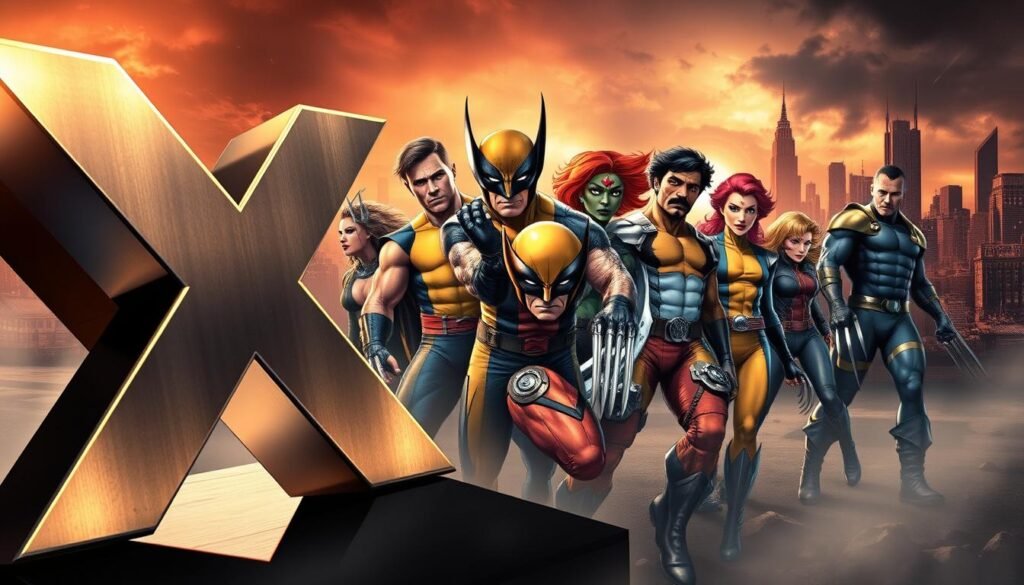
| Aspect | Details |
|---|---|
| Cultural Debates | Issues of discrimination and social justice were prominent. |
| Comic Themes | Mature narratives began to emerge, addressing real-world problems. |
| Industry Impact | Graphic novels gained recognition as a serious storytelling medium. |
This graphic novel wasn’t just a product of its time; it was a commentary on it. It challenged readers to think about the world around them, making it a pivotal work in comic history.
Creator Insights and the Story’s Origin
The making of this graphic novel is a testament to bold storytelling. It’s a book that didn’t just entertain but also challenged societal norms. Behind its success were two creative powerhouses: writer Chris Claremont and artist Brent Anderson.
About Chris Claremont and His Vision
Chris Claremont was already a legend in the comic world when he took on this project. Known for his work on Uncanny X-Men, he brought a mature and thought-provoking approach to this plot.
His vision was clear—to create a story that resonated with real-world issues like prejudice and discrimination.
Claremont’s writing wasn’t just about action; it was about depth. He crafted characters who felt real, their struggles mirroring those of marginalized groups.
This mutant narrative was a departure from traditional superhero tales, focusing more on the human condition than on flashy battles.

The Role of Brent Anderson and Other Contributors
Brent Anderson’s art was the perfect complement to Claremont’s words. His painterly style brought a unique visual identity to the graphic novel. Anderson’s use of color and panel design added layers of emotion, making every page a visual treat.
The collaboration between Claremont and Anderson wasn’t without its debates. Both had strong ideas about how the story should unfold. These creative discussions fueled the project, resulting in a work that was both innovative and impactful.
| Aspect | Details |
|---|---|
| Claremont’s Approach | Focused on mature themes and character depth. |
| Anderson’s Art Style | Used painterly techniques and innovative panel designs. |
| Creative Debates | Discussions on narrative and visual direction shaped the final product. |
This graphic novel was a bold step in the comic medium. It proved that comics could tackle serious issues while still being engaging. The risks taken by Claremont, Anderson, and the team paid off, leaving a lasting legacy in the world of storytelling.
Collects X-Men: God Loves, Man Kills Extended Cut (2020) #1-2; God Loves, Man Kills Variants.
In 1982, writer Chris Claremont was in the midst of his legendary run on UNCANNY X-MEN, changing the comics landscape forever and creating a new standard for super hero fiction! With a wealth of ideas, Claremont wasn’t contained to the main title alone, and he joined forces with industry giant Brent Anderson for a graphic novel titled God Loves, Man Kills.
X-Men: God Loves, Man Kills (1982) – First Appearance and Publication Milestones
In 1982, a groundbreaking graphic novel reshaped the comic industry. This book wasn’t just another release; it was a bold statement. Published as the fifth entry in Marvel’s Graphic Novel series, it stood out for its mature themes and standalone narrative.
Priced at $5.95 at launch, it was a premium product for its year. This story wasn’t tied to ongoing series, making it accessible to new readers.
Its release marked a turning point, proving that comics could tackle serious issues while remaining engaging.
Debut in the Marvel Graphic Novel Series
The graphic novel debuted as part of a revolutionary series from Marvel. It was a bold move, as comics were often seen as light entertainment.
This issue challenged that perception, offering a narrative that was both thought-provoking and visually stunning.
Its standalone nature allowed it to explore themes without the constraints of continuity. This approach made it a favorite among fans and critics alike. The book’s impact was immediate, influencing both the industry and its audience.
| Aspect | Details |
|---|---|
| Release Date | July 8, 1982 |
| Series Position | Fifth entry in Marvel Graphic Novel series |
| Pricing | $5.95 at launch |
| Industry Impact | Marked a shift toward mature storytelling in comics |
This novel wasn’t just a product of its time; it was a commentary on it. Its themes of prejudice and power resonated deeply, making it a pivotal work in comic history. For more insights, check out why this story remains one of the.
Exploring the Characters and Their Development
The characters in this graphic novel are more than just heroes and villains; they are reflections of real-world struggles.
Each mutant and antagonist is crafted with depth, making their journeys both personal and impactful. Let’s dive into their profiles and the evolution of their relationships.

Profiles of the Heroes and Their Foes
At the heart of the story are iconic figures like Professor X, Cyclops, and Storm. Each character brings unique strengths and vulnerabilities to the narrative.
Cyclops, the team’s leader, embodies discipline and responsibility, while Storm’s grace and power make her a standout member.
On the opposing side, William Stryker and Magneto represent contrasting ideologies. Stryker’s fanaticism and Magneto’s complex morality create a compelling debate about justice and survival. Their interactions with the heroes add layers to the story’s tension.
Character Arcs and Key Relationships
The graphic novel excels in portraying how characters grow and change. Magneto’s arc, for instance, is deeply nuanced.
His experiences as a Holocaust survivor shape his worldview, making him both a villain and a tragic figure. This complexity is a testament to Claremont’s storytelling.
Relationships within the team also evolve. The bond between Cyclops and Storm highlights trust and mutual respect. Meanwhile, Kitty Pryde’s journey from a young recruit to a confident mutant showcases her resilience. These arcs are visually enhanced by Brent Anderson’s art, which captures every emotional beat.
| Character | Role | Key Trait |
|---|---|---|
| Cyclops | Leader | Discipline |
| Storm | Member | Power |
| Magneto | Antagonist | Complex Morality |
| William Stryker | Antagonist | Fanaticism |
These characters and their development are central to the story’s impact. Their struggles and growth resonate with readers, making this graphic novel a timeless exploration of humanity.
For more on how superhero stories shape our world, check out the superhero revolution.
Delving into the Story’s Themes and Historical Impact
Exploring the themes of this graphic novel reveals its timeless relevance. Its narrative tackles issues like religious extremism, discrimination, and moral ambiguity, making it a powerful commentary on society.
These themes are not just confined to the pages; they reflect real-world struggles that continue to resonate today.
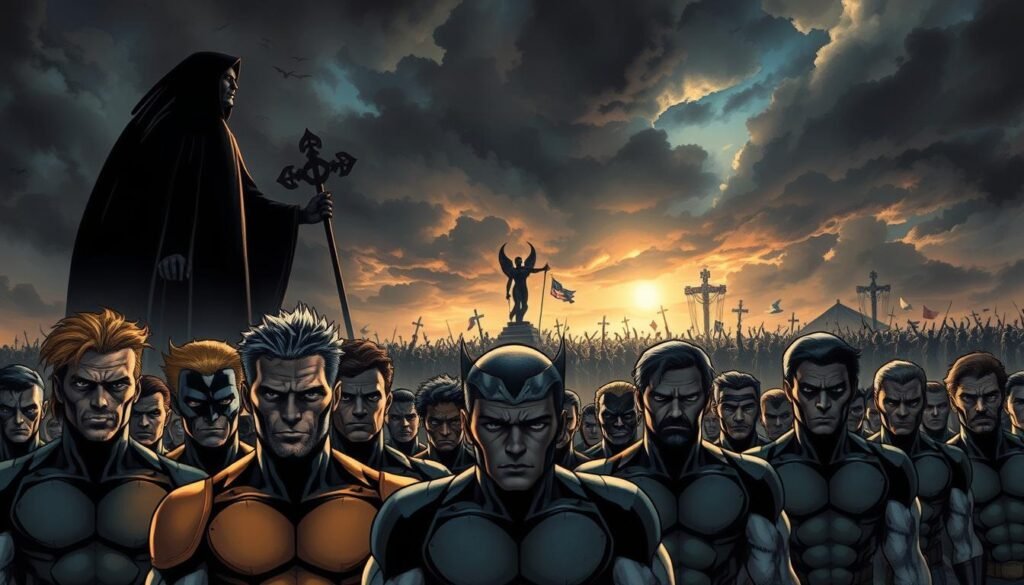
Religious Extremism, Discrimination, and Moral Ambiguity
The story’s portrayal of religious extremism is both raw and thought-provoking. Characters like William Stryker embody a belief system that justifies hatred and violence.
This mirrors real-world issues where power is often misused in the name of faith.
Discrimination is another central theme. The mutant metaphor serves as an allegory for racism and prejudice. Through this lens, the narrative challenges readers to confront their own biases and question societal norms.
Moral ambiguity adds depth to the story. Characters are not simply good or evil; they exist in shades of gray. This complexity forces readers to think critically about justice, survival, and the human condition.
Comparisons with Other Iconic Tales
When compared to other stories in the genre, this graphic novel stands out for its mature themes. While many tales focus on action, this one prioritizes emotional and intellectual depth. Its exploration of societal issues sets it apart from traditional superhero narratives.
For example, the scene where Stryker preaches against mutants at Madison Square Garden is a stark reminder of how belief can be weaponized. This moment is both chilling and reflective, highlighting the dangers of unchecked extremism.
| Theme | This Graphic Novel | Other Iconic Tales |
|---|---|---|
| Religious Extremism | Central to the plot, explored in depth | Often secondary or absent |
| Discrimination | Portrayed through mutant allegory | Addressed but less nuanced |
| Moral Ambiguity | Characters exist in shades of gray | Typically clear-cut heroes and villains |
This graphic novel’s themes are not just relevant to its time; they continue to inspire important conversations today. Its exploration of power, order, and human belief systems makes it a timeless work that challenges and enlightens.
Critical Reception and the Legacy of the Graphic Novel
The critical reception of this graphic novel was nothing short of groundbreaking. When it first debuted, it sparked intense discussions among critics and fans alike. Its bold themes and mature storytelling set a new standard for the medium.
Contemporary Reviews and Cultural Influence
Upon its release, critics praised the novel’s innovative approach. Many highlighted its exploration of themes like race, power, and ethics. The story’s depth and emotional resonance were frequently mentioned in reviews.
Retrospective analyses have only solidified its reputation. The novel’s portrayal of belief systems and societal issues continues to inspire conversations. Its influence can be seen in the works of many followers in the comic industry.
One fact that stands out is how the novel challenged traditional superhero narratives. It wasn’t just about action; it was about the human condition. This shift in storytelling left a lasting mark on the genre.
| Aspect | Details |
|---|---|
| Critical Praise | Highlighted mature themes and innovative storytelling. |
| Cultural Impact | Influenced discussions on race, power, and ethics. |
| Legacy | Inspired future comic creators and storylines. |
The art style also played a significant role in its success. The visuals complemented the narrative, adding layers of emotion and depth. This combination of art and storytelling made it a standout work.
As a member of the comic community, I’ve seen how this novel continues to resonate. Its themes remain relevant, and its legacy endures. It’s a testament to the power of storytelling to challenge and inspire.
This graphic novel didn’t just entertain; it made readers think. Its exploration of belief systems and societal issues continues to spark important conversations.
As we move to the next section, we’ll explore how its influence extended beyond the pages into other media adaptations.
Other Media Adaptations and Fun Curiosities
The influence of this graphic novel extends far beyond its pages. Its themes and visuals have inspired adaptations across various media, from films to behind-the-scenes creative processes.
Let’s explore how this story has been reimagined and the intriguing details that make it so versatile.
Film Adaptations and Versatile Storytelling
One of the most notable adaptations is the film *X2: X-Men United* (2003). It incorporated key elements from the graphic novel, such as the portrayal of William Stryker and his crusade against mutants.
The film’s depiction of Stryker’s fanaticism and the moral debate surrounding mutant rights echoed the novel’s themes.
Scenes like Stryker’s speech at a location reminiscent of Madison Square Garden highlighted the story’s relevance.
The film’s dynamic movement and visual storytelling paid homage to Brent Anderson’s art, translating the comic’s energy onto the screen.
Intriguing Behind-the-Scenes Facts
Behind the scenes, the adaptation process was filled with creative choices. For instance, the filmmakers debated how to balance the novel’s mature themes with the film’s broader audience.
This argument led to a nuanced portrayal of characters like Magneto, whose complex morality remained intact.
Casting also played a crucial role. Brian Cox’s portrayal of Stryker brought a chilling intensity to the character. The decision to use real-world locations, such as a stadium resembling Madison Square Garden, added authenticity to the narrative.
| Aspect | Graphic Novel | Film Adaptation |
|---|---|---|
| William Stryker | Fanatic preacher | Chilling antagonist |
| Key Scene | Stryker’s speech | Stadium address |
| Visual Style | Brent Anderson’s art | Dynamic cinematography |
The graphic novel’s page design also influenced the film’s structure. The way panels flowed and emphasized movement was mirrored in the film’s pacing and action sequences. This attention to detail made the adaptation feel true to its source.
Chamada para continuar no Blog: Hero and Villain World
If you’re fascinated by how stories evolve across media, there’s more to explore. Dive deeper into the world of heroes and villains at Hero and Villain World.
Discover how narratives like this one continue to shape our understanding of power, morality, and the human condition.
Collects X-Men: God Loves, Man Kills Extended Cut (2020) #1-2; God Loves, Man Kills Variants.
In 1982, writer Chris Claremont was in the midst of his legendary run on UNCANNY X-MEN, changing the comics landscape forever and creating a new standard for super hero fiction! With a wealth of ideas, Claremont wasn’t contained to the main title alone, and he joined forces with industry giant Brent Anderson for a graphic novel titled God Loves, Man Kills.
Conclusion
This graphic novel remains a cornerstone of comic storytelling. Its exploration of themes like race, power, and moral ambiguity continues to resonate.
From its bold creative vision to its deep character development, it’s a story that challenges and inspires.
Over time, its influence has extended beyond comics, shaping broader media and cultural discussions. As a leader in mature storytelling, it set a new standard for the genre.
Its themes of prejudice and survival remain relevant, offering a fresh view with each read.
For me, this book is more than just a story; it’s a reflection of the human condition. Its narrative movement and emotional depth make it a timeless work. I encourage you to revisit it with a new perspective and explore its lasting impact.
If you’re curious to learn more, check out the role of comics in American. This graphic novel is a testament to the power of art to spark meaningful conversations and shape our world.
FAQ
What makes this graphic novel stand out in the Marvel universe?
This story tackles heavy themes like discrimination and moral ambiguity, making it one of the most thought-provoking tales in the Marvel catalog. Its bold narrative and character depth set it apart.
Who are the key creators behind this work?
Chris Claremont wrote the story, bringing his signature depth to the characters, while Brent Anderson’s art brought the emotional weight of the plot to life. Their collaboration made it a classic.
How does this story address real-world issues?
It explores themes like religious extremism and prejudice, mirroring societal struggles. The characters’ conflicts and the plot’s intensity reflect the challenges of humanity’s darker side.
What role does William Stryker play in the story?
Stryker is the antagonist, a zealot who leads a crusade against mutants. His beliefs and actions drive the central conflict, making him a memorable and complex villain.
How does this graphic novel compare to other X-Men stories?
It’s often regarded as one of the most impactful due to its mature themes and emotional depth. Unlike many action-driven tales, it focuses on moral debates and character development.
Are there any notable adaptations of this story?
Yes, elements of the plot were adapted into the film *X2: X-Men United*. The graphic novel’s influence can be seen in its exploration of similar themes and character dynamics.
What’s the significance of Madison Square Garden in the story?
It serves as a pivotal location where key events unfold. The setting amplifies the tension and stakes, making it a memorable part of the narrative.
How does the story handle the relationship between mutants and humans?
It delves into the fear and hatred humans often feel toward mutants, while also showing the mutants’ struggle for acceptance. This dynamic drives much of the plot’s conflict.
